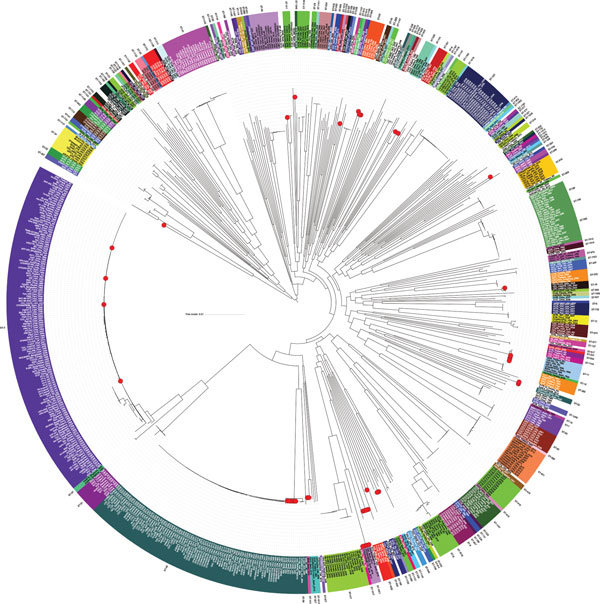Volume 24, Number 5—May 2018
Research
Epidemic Dynamics of Vibrio parahaemolyticus Illness in a Hotspot of Disease Emergence, Galicia, Spain
Figure 1

Figure 1. Phylogenetic reconstruction of Vibrio parahaemolyticus based on 738 available genomes. Red dots indicate isolates from Spain collected over the past 20 years from clinical settings and environmental sources. Colors represent sequence types, and areas without color correspond to undetermined sequence types. Scale bars represent nucleotide substitutions per site.
Page created: April 17, 2018
Page updated: April 17, 2018
Page reviewed: April 17, 2018
The conclusions, findings, and opinions expressed by authors contributing to this journal do not necessarily reflect the official position of the U.S. Department of Health and Human Services, the Public Health Service, the Centers for Disease Control and Prevention, or the authors' affiliated institutions. Use of trade names is for identification only and does not imply endorsement by any of the groups named above.